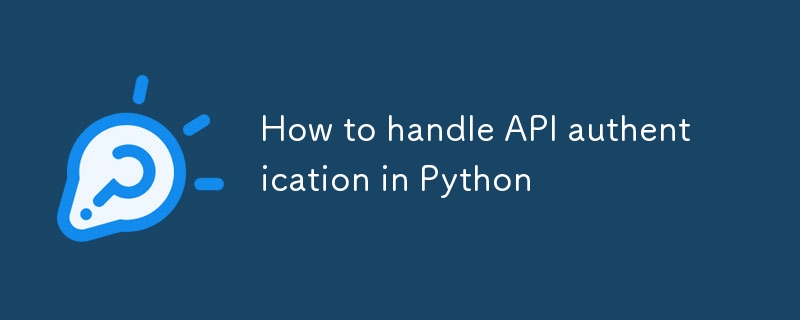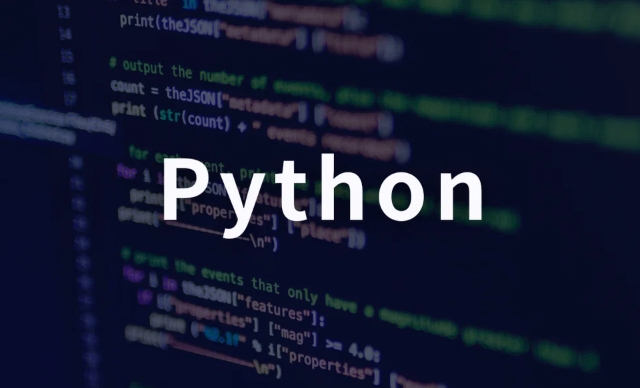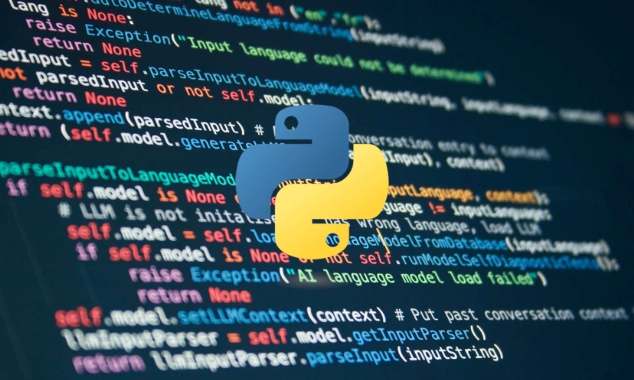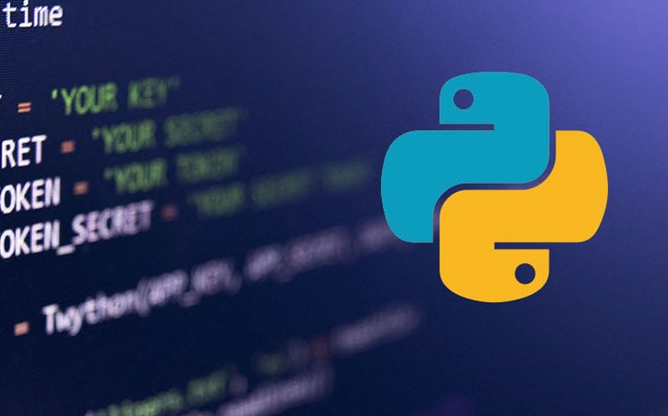How to handle API authentication in Python
Jul 13, 2025 am 02:22 AMThe key to handling API authentication is to understand and use the authentication method correctly. 1. API Key is the simplest authentication method, usually placed in the request header or URL parameters; 2. Basic Auth uses username and password for Base64 encoding transmission, suitable for internal systems; 3. OAuth2 needs to obtain the token first through client_id and client_secret, and then bring a Bearer Token in the request header; 4. In order to deal with the token expiration, the token management class can be encapsulated and automatically refreshed the token; in short, selecting the appropriate method according to the document and safely storing the key information is the key.

Handling API authentication is not actually mysterious. The key is to understand the authentication method you use and how to use it correctly in Python. The authentication mechanisms used by different APIs may be different, but the most common methods are: API Key, Basic Auth, OAuth1, and OAuth2. Let’s take a look at how these common methods are handled in Python.

Use API Key to authenticate
Many services verify the request source through a simple API Key, which is usually sent as part of the request headers.
The method is very simple:

- Add
Authorizationfield to the request header, the value isAPI_KEY - Or append
key=your_api_keyto the URL parameter
import requests
headers = {
'Authorization': 'your_api_key_here'
}
response = requests.get('https://api.example.com/data', headers=headers)Some APIs require you to use specific field names in the header, such as
X-API-Key. At this time, you cannot forceAuthorization, you have to see the documentation instructions.
Using Basic Auth
Basic Auth is a relatively basic HTTP authentication method. Usually, the user name and password are combined into a string and then Base64 encoding is passed to the server.

Python's requests library provides built-in support:
import requests
response = requests.get(
'https://api.example.com/data',
auth=('username', 'password')
)This method is suitable for testing or internal system use and is not recommended for public services because credentials are easily intercepted.
Use OAuth2 to get the token and call the API
Now many services use the OAuth2 process to obtain the access token (Token), and then use this token to initiate subsequent requests.
The general process is as follows:
- Apply for token from the authentication server (client_id and client_secret are required)
- Received the returned access_token
- Take
Authorization: Bearer your_token
import requests
# Get Token
data = {
'grant_type': 'client_credentials'
}
auth = ('client_id', 'client_secret')
response = requests.post('https://api.example.com/oauth/token', data=data, auth=auth)
token = response.json()['access_token']
# Use Token to request data headers = {'Authorization': f'Bearer {token}'}
data_response = requests.get('https://api.example.com/data', headers=headers)The implementation details of OAuth2 on different platforms may vary slightly, such as some need to add scope, and some need to specify content-type. Remember to refer to the official documentation.
Handle Token Expiration and Automatic Refresh
Tokens generally have validity periods, and they need to be re-acquisitioned after they expire. If you are writing long-term service (such as background tasks), it is recommended to encapsulate a Token management class.
You can design the logic like this:
- Get the token before the first request
- Save the token and expiration time
- Determine whether the token expires before each request
- If it expires, re-acquire
import time
class TokenManager:
def __init__(self, client_id, client_secret):
self.client_id = client_id
self.client_secret = client_secret
self.token = None
self.expires_at = 0
def get_token(self):
if time.time() >= self.expires_at:
# Simulate requests for new tokens
self.token = 'new_token'
self.expires_at = time.time() 3600 # Assume that one hour expires return self.token After encapsulation, get_token() method can be called uniformly when actually calling the API to avoid frequent manual refresh.
Basically that's it. Although there are a lot of authentication methods, each has a fixed routine. The key is to choose the right method based on the document and pay attention to safely storing the key information.
The above is the detailed content of How to handle API authentication in Python. For more information, please follow other related articles on the PHP Chinese website!

Hot AI Tools

Undress AI Tool
Undress images for free

Undresser.AI Undress
AI-powered app for creating realistic nude photos

AI Clothes Remover
Online AI tool for removing clothes from photos.

Clothoff.io
AI clothes remover

Video Face Swap
Swap faces in any video effortlessly with our completely free AI face swap tool!

Hot Article

Hot Tools

Notepad++7.3.1
Easy-to-use and free code editor

SublimeText3 Chinese version
Chinese version, very easy to use

Zend Studio 13.0.1
Powerful PHP integrated development environment

Dreamweaver CS6
Visual web development tools

SublimeText3 Mac version
God-level code editing software (SublimeText3)

Hot Topics
 What are python iterators?
Jul 08, 2025 am 02:56 AM
What are python iterators?
Jul 08, 2025 am 02:56 AM
InPython,iteratorsareobjectsthatallowloopingthroughcollectionsbyimplementing__iter__()and__next__().1)Iteratorsworkviatheiteratorprotocol,using__iter__()toreturntheiteratorand__next__()toretrievethenextitemuntilStopIterationisraised.2)Aniterable(like
 How to iterate over two lists at once Python
Jul 09, 2025 am 01:13 AM
How to iterate over two lists at once Python
Jul 09, 2025 am 01:13 AM
A common method to traverse two lists simultaneously in Python is to use the zip() function, which will pair multiple lists in order and be the shortest; if the list length is inconsistent, you can use itertools.zip_longest() to be the longest and fill in the missing values; combined with enumerate(), you can get the index at the same time. 1.zip() is concise and practical, suitable for paired data iteration; 2.zip_longest() can fill in the default value when dealing with inconsistent lengths; 3.enumerate(zip()) can obtain indexes during traversal, meeting the needs of a variety of complex scenarios.
 How to call Python from C ?
Jul 08, 2025 am 12:40 AM
How to call Python from C ?
Jul 08, 2025 am 12:40 AM
To call Python code in C, you must first initialize the interpreter, and then you can achieve interaction by executing strings, files, or calling specific functions. 1. Initialize the interpreter with Py_Initialize() and close it with Py_Finalize(); 2. Execute string code or PyRun_SimpleFile with PyRun_SimpleFile; 3. Import modules through PyImport_ImportModule, get the function through PyObject_GetAttrString, construct parameters of Py_BuildValue, call the function and process return
 What is a forward reference in Python type hints for classes?
Jul 09, 2025 am 01:46 AM
What is a forward reference in Python type hints for classes?
Jul 09, 2025 am 01:46 AM
ForwardreferencesinPythonallowreferencingclassesthatarenotyetdefinedbyusingquotedtypenames.TheysolvetheissueofmutualclassreferenceslikeUserandProfilewhereoneclassisnotyetdefinedwhenreferenced.Byenclosingtheclassnameinquotes(e.g.,'Profile'),Pythondela
 What is descriptor in python
Jul 09, 2025 am 02:17 AM
What is descriptor in python
Jul 09, 2025 am 02:17 AM
The descriptor protocol is a mechanism used in Python to control attribute access behavior. Its core answer lies in implementing one or more of the __get__(), __set__() and __delete__() methods. 1.__get__(self,instance,owner) is used to obtain attribute value; 2.__set__(self,instance,value) is used to set attribute value; 3.__delete__(self,instance) is used to delete attribute value. The actual uses of descriptors include data verification, delayed calculation of properties, property access logging, and implementation of functions such as property and classmethod. Descriptor and pr
 Parsing XML data in Python
Jul 09, 2025 am 02:28 AM
Parsing XML data in Python
Jul 09, 2025 am 02:28 AM
Processing XML data is common and flexible in Python. The main methods are as follows: 1. Use xml.etree.ElementTree to quickly parse simple XML, suitable for data with clear structure and low hierarchy; 2. When encountering a namespace, you need to manually add prefixes, such as using a namespace dictionary for matching; 3. For complex XML, it is recommended to use a third-party library lxml with stronger functions, which supports advanced features such as XPath2.0, and can be installed and imported through pip. Selecting the right tool is the key. Built-in modules are available for small projects, and lxml is used for complex scenarios to improve efficiency.
 how to avoid long if else chains in python
Jul 09, 2025 am 01:03 AM
how to avoid long if else chains in python
Jul 09, 2025 am 01:03 AM
When multiple conditional judgments are encountered, the if-elif-else chain can be simplified through dictionary mapping, match-case syntax, policy mode, early return, etc. 1. Use dictionaries to map conditions to corresponding operations to improve scalability; 2. Python 3.10 can use match-case structure to enhance readability; 3. Complex logic can be abstracted into policy patterns or function mappings, separating the main logic and branch processing; 4. Reducing nesting levels by returning in advance, making the code more concise and clear. These methods effectively improve code maintenance and flexibility.
 Implementing multi-threading in Python
Jul 09, 2025 am 01:11 AM
Implementing multi-threading in Python
Jul 09, 2025 am 01:11 AM
Python multithreading is suitable for I/O-intensive tasks. 1. It is suitable for scenarios such as network requests, file reading and writing, user input waiting, etc., such as multi-threaded crawlers can save request waiting time; 2. It is not suitable for computing-intensive tasks such as image processing and mathematical operations, and cannot operate in parallel due to global interpreter lock (GIL). Implementation method: You can create and start threads through the threading module, and use join() to ensure that the main thread waits for the child thread to complete, and use Lock to avoid data conflicts, but it is not recommended to enable too many threads to avoid affecting performance. In addition, the ThreadPoolExecutor of the concurrent.futures module provides a simpler usage, supports automatic management of thread pools and asynchronous acquisition






